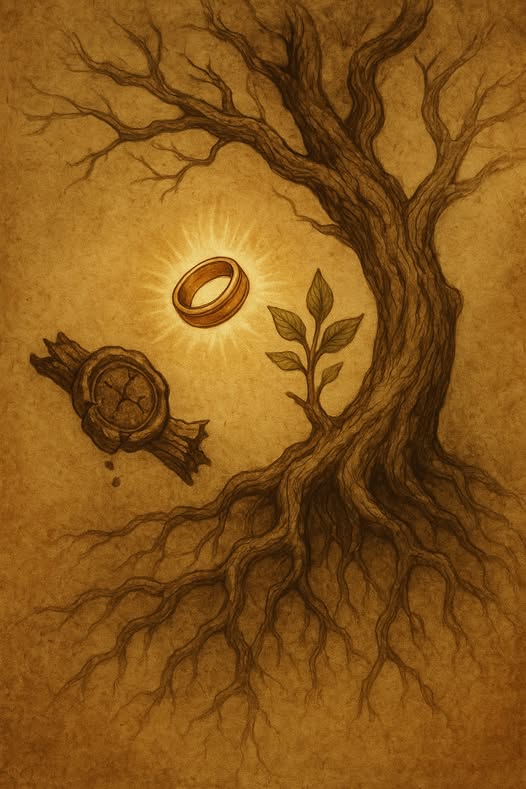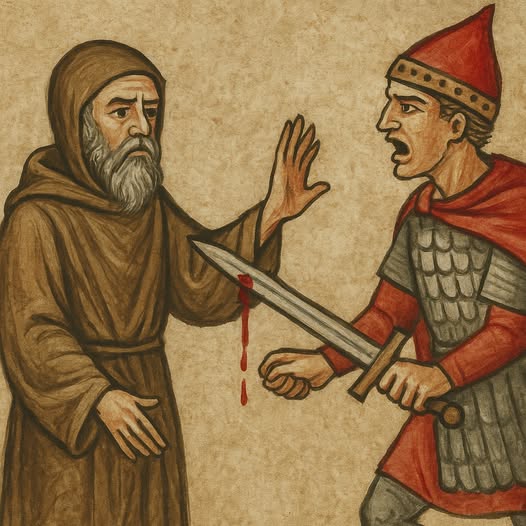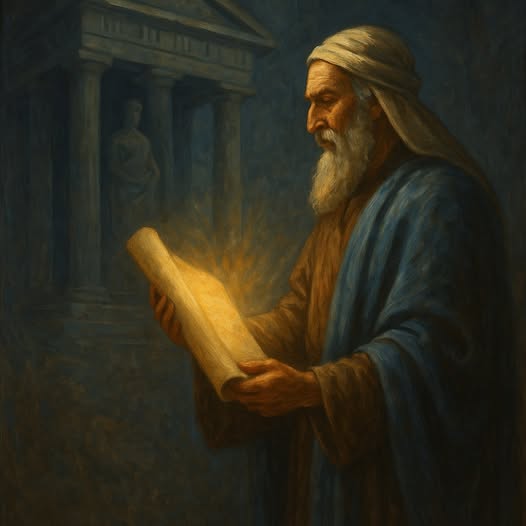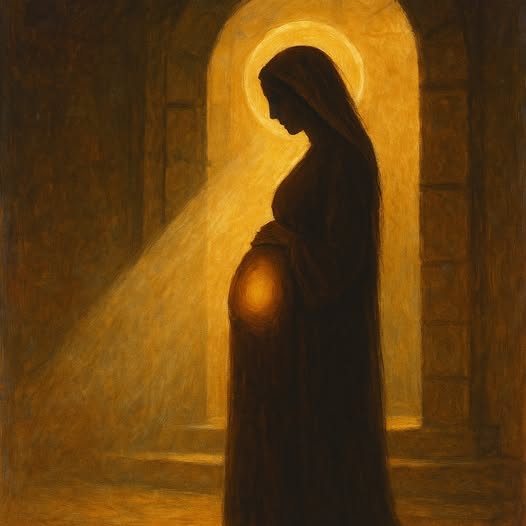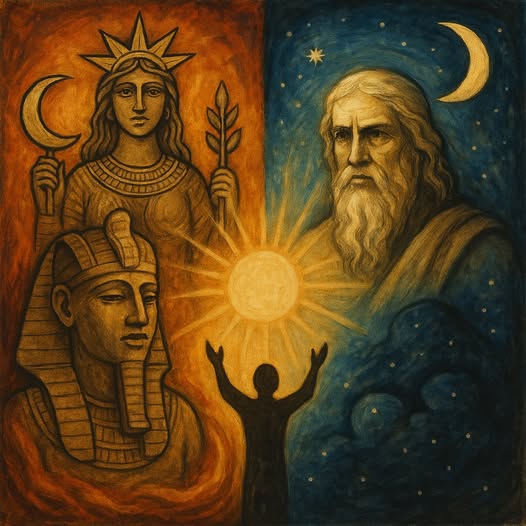
The world of the Ancient Near East was crowded with gods. Every city had its patron deity, every force of nature its divine representative. These gods rose and fell in seasonal patterns, demanding worship in exchange for blessings. Their existence was deeply tied to nature’s cycles and humanity’s offerings. Into this landscape came a radically different vision of the divine, a God who did not die, did not need, and did not trade blessings for food. The God of Israel disrupted the entire theological framework of the region. This lesson explores how the biblical vision of Yahweh stood in stark contrast to the cyclical, symbiotic, and unstable pantheons of the Ancient Near East.
Cycles and Death: Gods Who Rise and Fall
Many Ancient Near Eastern deities were inseparably linked to the patterns of nature. They died and returned, often symbolizing the agricultural or celestial rhythms that governed life.
Inanna (Ishtar), the goddess of love and war in Mesopotamian belief, descended into the underworld and was eventually brought back. This drama reflected the seasonal decay and renewal of fertility and crops.
In Egypt, Osiris was murdered and dismembered, only to be reassembled and reborn each year. His myth was directly tied to the annual flooding of the Nile, the lifeblood of Egyptian agriculture.
These stories were not metaphors to the ancient mind. They were theological explanations for why the world functioned as it did. The death of a god was why the rains stopped. His return brought harvest and life. The gods were as much victims of cosmic cycles as humans were.
The Symbiotic Economy of Worship
In this system, the gods were not all-powerful. They required humans to meet their needs through ritual, sacrifice, and service. In return, they provided rain, protection, and fertility. If worship failed, chaos was believed to return.
Baal, the storm god of Canaan, was expected to bring rain. If he did not, the people assumed he was dead or imprisoned in the underworld. Rituals of mourning and sacrifice were performed to restore him and the land.
This was a relationship built on mutual dependency. The gods depended on worship to maintain their strength. Humans depended on the gods to keep nature functioning. If either side broke the cycle, disaster could result. The divine realm was a cosmic economy of supply and demand.
The God Who Transcends the System
Yahweh, the God of Israel, refused to participate in this system. He did not rise and fall with the crops. He was not fed by sacrifice. He was not created by the world but its Creator. This was a theological revolution.
In Malachi 3:6, God declares, “I the Lord do not change.” This statement alone severs Him from the patterns of seasonal death and rebirth. He is constant, unbound by nature, and sovereign over time.
Unlike the gods who needed humanity to function, Yahweh’s relationship with people was not transactional. His blessings came not from need but from grace. While He called Israel to worship and obedience, He did not depend on their rituals to sustain His power. The covenant was not a barter system but a revelation of His love and holiness.
Monotheism and Divine Council
Whereas the religions of the Ancient Near East featured entire pantheons of specialized gods, the biblical text elevates Yahweh as the Most High. Yet, it does not deny the existence of other divine beings. Instead, it places them in subordinate roles under Yahweh’s ultimate authority.
Psalm 82 presents a vision of a divine council, where God stands in judgment over other spiritual beings. These “gods” are rebuked for their failure to uphold justice. Unlike polytheistic systems where gods war with each other for dominance, the biblical vision frames Yahweh as the supreme authority who delegates but never abdicates.
This hierarchy redefines loyalty. Worship is due only to Yahweh, even if other powers exist. Israel’s Shema, “Hear, O Israel, the Lord our God, the Lord is one,” stands as a theological and cultural dividing line from the surrounding nations.
Stability and Covenant Versus Chaos and Caprice
The gods of the Ancient Near East were fickle. Their moods shifted. Their alliances crumbled. Their blessings came and went with the tides of myth. This instability shaped the psychology of worshipers, who lived in fear of offending capricious deities.
Yahweh, by contrast, revealed Himself through covenant. The Abrahamic and Mosaic covenants established fixed promises, not fragile contracts. God’s faithfulness was the foundation of Israel’s hope. He was not a god who might forget or change His mind if insufficiently fed. He was the Rock, steady and sure.
This covenantal stability was not universalism. Blessings could be lost through rebellion. But the character of God was not in question. His justice, mercy, and righteousness were unwavering.
Created for Relationship, Not Labor
Perhaps the starkest contrast lies in the purpose of humanity. In the Babylonian Enuma Elish, humans were made from the blood of a rebellious god to relieve the other gods of their work. Humanity’s role was to feed, serve, and maintain the gods through constant ritual.
The Bible opens with a different story. In Genesis 1:26–27, God says, “Let us make mankind in our image, in our likeness.” Humans are not slaves but representatives. They are made to reflect God’s character and rule His creation on His behalf. This grants them immense dignity and purpose.
Instead of existing to ease divine burdens, humans are appointed as stewards of the earth and participants in God’s unfolding plan. The task is not ritual maintenance but sacred partnership.
Conclusion
The gods of the Ancient Near East reflected the world they governed, chaotic, cyclical, and insecure. They died, rose, and fed on worship like sustenance. Their power was limited, their morality suspect, and their interest in humanity conditional.
The God of the Bible does not fit that mold. He is not subject to the world. He created it. He does not need humans. He chooses to love them. He does not wobble with the seasons. He remains steady in justice and mercy.
This contrast is not merely academic. It defines the kind of hope, dignity, and trust that biblical faith offers. A world ruled by Yahweh is not a world of endless repetition and divine instability. It is a world moving toward redemption, led by a God who never changes.
Discussion Questions
- How does the biblical view of humans as image-bearers differ from the servant role assigned to humans in ANE myths?
- What theological implications arise from a God who does not need worship but desires relationship?
- How does the concept of divine immutability (unchanging nature) shape biblical faith differently than religions with dying and rising gods?
- What does the presence of a divine council in the Bible suggest about the biblical worldview in contrast to polytheism?
- How might understanding these ancient contexts enrich modern faith and biblical interpretation?
Want to Know More?
- Against the Gods: The Polemical Theology of the Old Testament by John D. Currid
Explores how the biblical authors intentionally countered and subverted the surrounding ANE mythologies, showing the theological contrast between Israel’s God and pagan deities. - Ancient Near Eastern Texts Relating to the Old Testament edited by James B. Pritchard
A foundational collection of original ANE texts that lets you read the myths and rituals directly from the cultures surrounding ancient Israel. - The Lost World of Genesis One by John H. Walton
Walton offers a contextual reading of Genesis through ANE lenses, emphasizing function and order rather than material origins. - Gods, Goddesses, and Images of God in Ancient Israel by Othmar Keel and Christoph Uehlinger
Explores the iconography and theological distinctions of Israelite religion in comparison with ANE traditions. - The Unseen Realm by Michael S. Heiser
A deep dive into the divine council worldview in the Bible, helping clarify how the biblical God relates to other spiritual beings.

